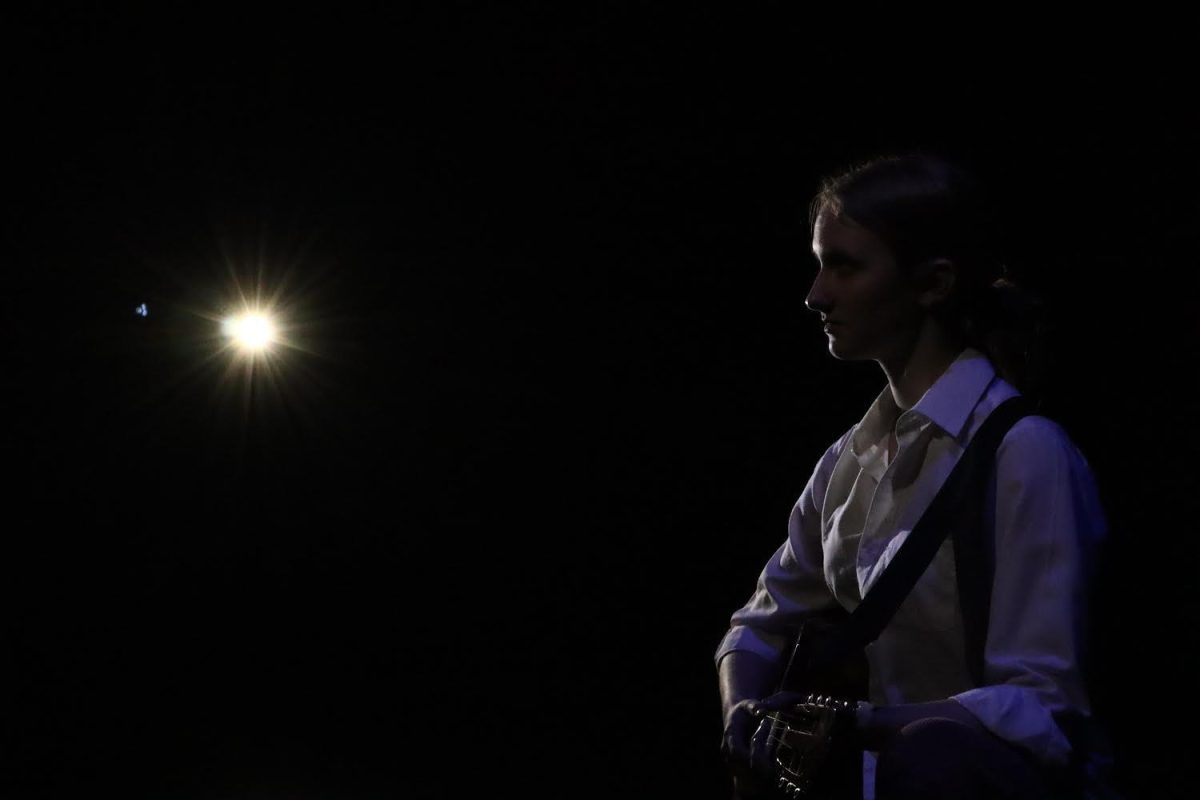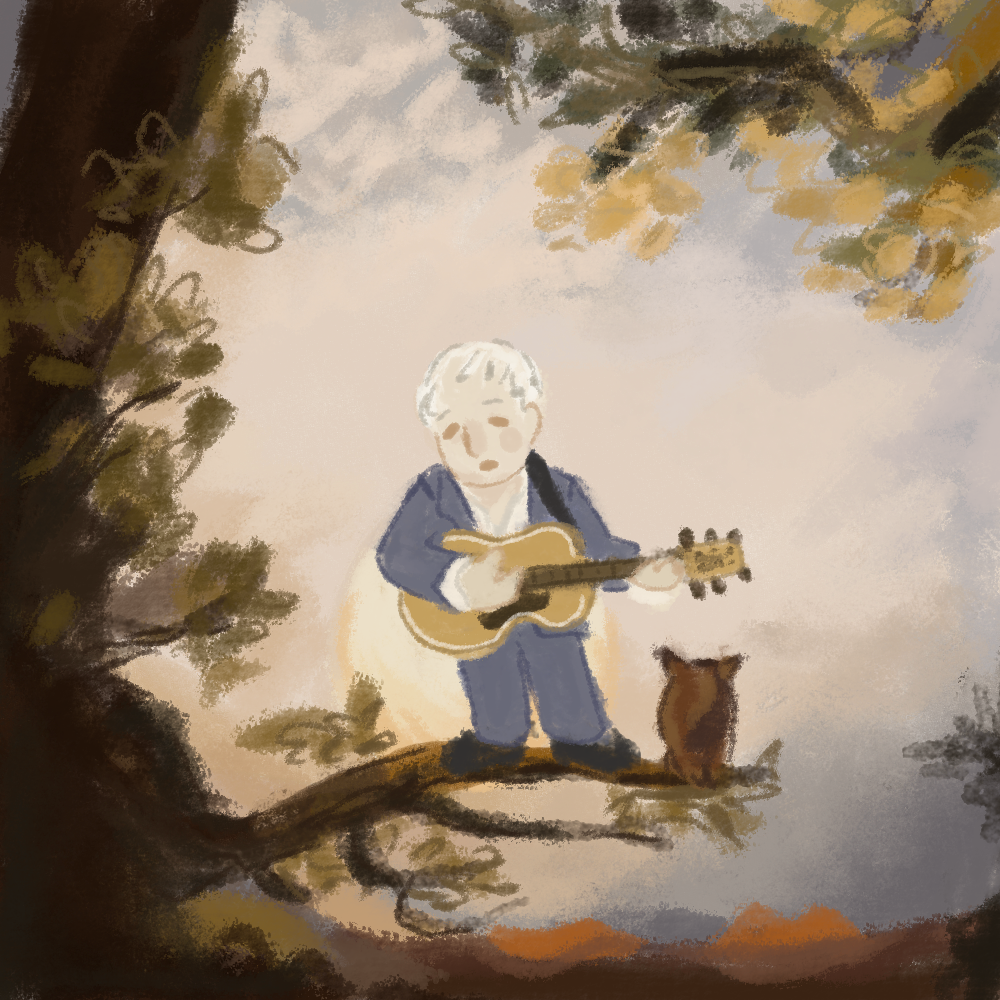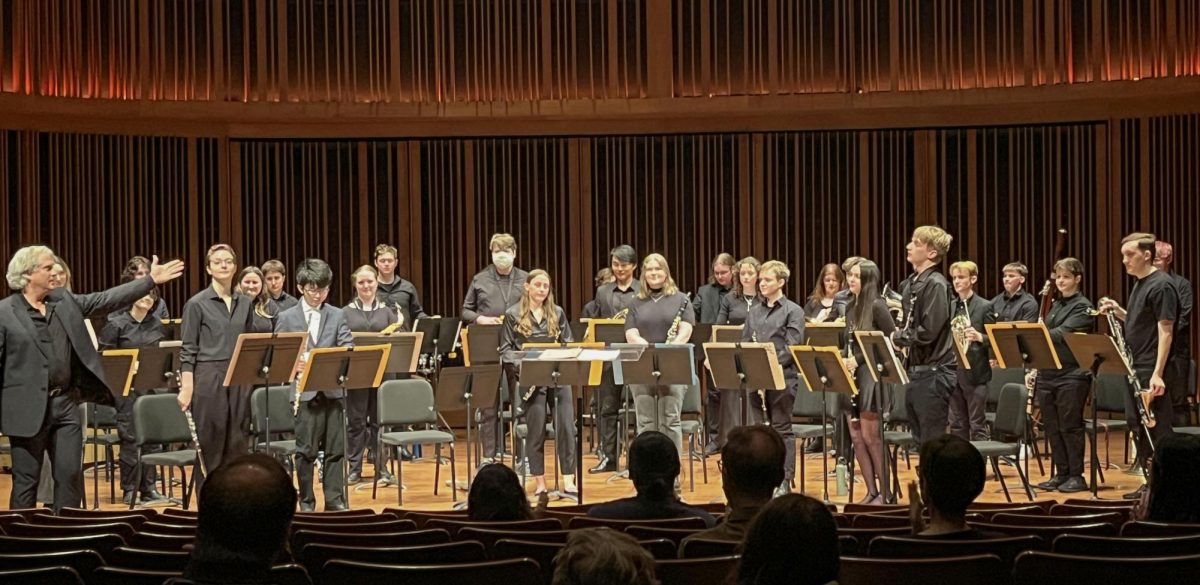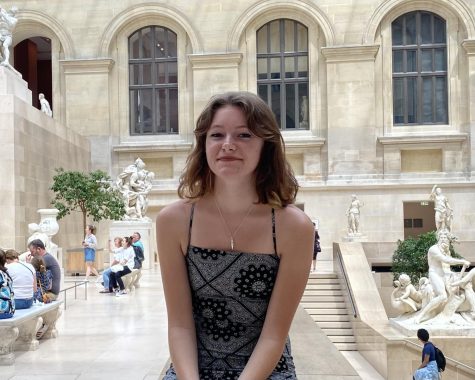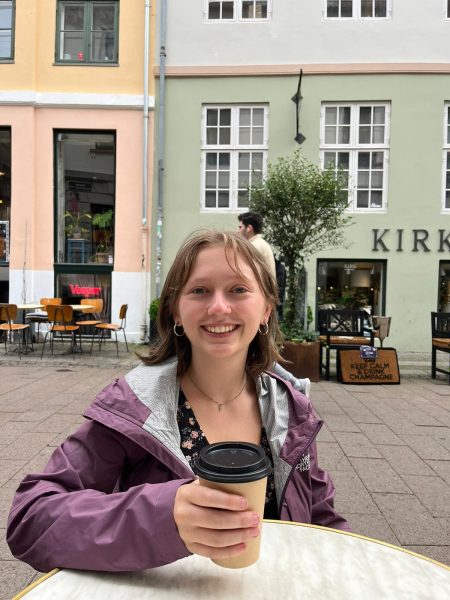Though the late March snow has thwarted our attempts to enjoy the outdoors, don’t despair: the Macalester theater and dance department has an event ready to transport us to another world. This spring’s production, “Eurydice,” puts a new and interesting spin on the classic Greek myth of Orpheus and Eurydice. While the original myth focuses on Orpheus, portraying him as a Jesus-like character as he goes down to hell to retrieve Eurydice, this adaptation by Sarah Ruhl puts Eurydice at the center as she wrestles with her own grief and confronts both love and loss.
“Eurydice” premiered in 2003 in Madison, Wis. and has been performed countless times across the country since, even opening on the Off-Broadway theater Second Stage and in London. The play has even been adapted into an opera by the same name by Ruhl, with music by Matthew Aucoin and directed by the prolific Mary Zimmerman.
The play depicts Eurydice, played by Zoey Yandell ’24, on the night of her wedding to Orpheus, played by Caroline Bivens ’27. After an encounter with the Nasty Interesting Man, played by Arkar Kyaw ’24, she dies unexpectedly and must navigate the underworld, controlled by the Lord of the Underworld, played by Ian Machalek ’27. Forced to choose between staying with her dead father, played by Teri Sun ’27, or returning to the mortal plane to reunite with her true love, Orpheus, Eurydice’s experiences shape the play into an unflinching look at grief. The shift to the underworld is signified by the entrance of the chorus of stones, the play’s version of a chorus, played by Beja Puskas ’26, Caitlin Compton ’24, Cam Wright ’26, Ellie Berkenblit ’24, Emma Eichenbaum ’24, Mia Guzman ’26 and Tim Delventhal ’26.
Once in the underworld, Eurydice’s father helps her regain her memories and her ability to speak and read, which she loses upon dying. Orpheus, in the land of the living, sends to the underworld the complete works of Shakespeare, and decides to retrieve Eurydice himself. Finally, in the pivotal point of the myth, Orpheus is allowed to lead his wife out of the underworld with the stipulation that he may not turn around to look at her or Eurydice will remain dead forever.
Here, Ruhl’s adaptation deviates from the original myth. Orpheus turns around to see Eurydice just as he is about to lead her out of the underworld, which is commonly interpreted as the manifestation of Orpheus’ doubts, both for Hades’ claim that Eurydice would actually be behind him and for Eurydice’s love for him. However, in this version, Eurydice calls out to Orpheus, prompting him to turn around and causing her second death. In the original story, this decision seems unbelievable, but with the addition of her father as a character, her choice represents her subconscious fear of returning to the world of the living and leaving without her father.
Without giving away too much more of the piece, “Eurydice” has a bittersweet and poignant conclusion. Highlighting both love and loss, the play depicts Eurydice as she is forced to make an impossible choice between living with the love of her life or her father. Ruhl’s changes to the source material bring themes of family to the myth that elevates the emotional intensity in an effective and interesting way.
Director Randy Reyes has been a theater artist in the Twin Cities — acting, directing, teaching and writing — since he moved here in 2005 from New York City after training at the Juilliard School. “Eurydice” marks Reyes’ first time directing a Macalester production as a tenure track Assistant Professor in the Theater and Dance department, as well as the second show he has directed at Macalester. His first production followed another Greek myth, Antigone.
The decision to put on “Eurydice” was a collaborative effort between the department and students. Those involved provided input regarding a couple of potential choices, ultimately finding that “Eurydice” was the best match.
“We’ve seen that story [Orpheus] a million times, right,” Reyes said. “We don’t need to have another. I don’t need to see it, especially right now in our world.”
Again flipping the original myth on its head, a female-identifying student, Bivens was cast to play Orpheus.
“I love the play because it’s an homage,” Reyes said. “It’s a modern adaptation of the Greek story of Orpheus and Eurydice. I love that there’s a classic aspect of it, but I also love the modern feel of it. The modern poetry is as cerebral as it’s extremely theatrical, which is very exciting [and] has great language.”
Reyes finds himself drawn to Greek plays due largely to the emphasis on the actors themselves. This production of “Eurydice” focuses on ‘old school theatrical elements’ as opposed to videos, holograms or other new technologies. The play does utilize a projector, allowing for letters written by Eurydice and Orpheus to be experienced by the wider audience, and another scene utilizes the projector to display pictures of the cast with their dads, echoing the theme of father/child relationships and providing personal connection to a well-known classic myth.
“I love the nature of the stories,” Reyes said. “The emotions are very high, the stakes are incredibly high and important, so it’s a huge challenge to pull off. And I also love that a lot of the plays don’t rely on story; it’s basically an empty space, [that’s then] focused on the actors.”
The set design itself is relatively simple, remaining largely sedentary throughout the course of the show. The chorus utilizes their bodies and props to fill in the world of the play, while lights and sound help to define place and time.
“The set design is an homage to classic Greek theater, but it’s in reverse,” Reyes said. “So the seats would be the backdrop of our stage in an amphitheater, where the seats of an amphitheater would be as the backdrop of our stage, and then we have a circle orchestra in the middle.”
In addition to the set, costume designer MaryBeth Gagner leaned into a 1950s aesthetic which Reyes interpreted as a return to a more innocent time. Reyes compared the underworld to “Alice in Wonderland,” in contrast to the real world.
“The real world is much more stark, and the underworld has more saturated color and texture,” Reyes said.
Reyes shared that the level of trauma embedded in the show in comparison to the actors’ own experiences, as well as the implementation of a chorus, have been challenges within the production process.
“It’s also working with a chorus, having the chorus work together, be able to understand each other’s energies and be able to sense where they are so that they speak [and] move in unison, yet bring in their own personalities,” Reyes said. “Discovering that has been a challenge, but in the best way.”
Reyes found joy in the playful aspects that the actors have brought into the rehearsal room. The environment of the room has been dynamic and creative, making a safe space where mistakes push the actors and creative team to grow.
“The fact that we have a cast that is extremely thoughtful of each other, and yet playful in the room, has made that challenge an actually fun and exciting process,” Reyes said.
Performances run from March 29- 30 and April 5-7 at the Mainstage Theater in the Janet Wallace Fine Arts Center. Tickets can be reserved online.

